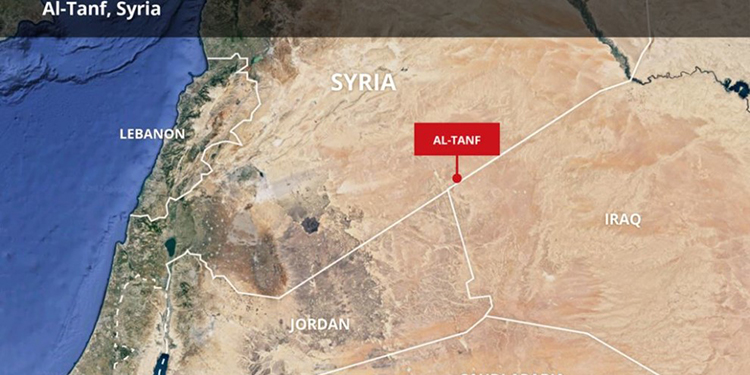The battle of the Al-Tanf crossing is becoming essential in filling the gap left by the collapse of the Islamic State (ISIS). It is not a battle of influence or the ability of the state to control the border, but to regain the true Syrian role and resist large corporate monopolies through the Tapline (Trans-Arabian Pipeline) or Iraqi oil lines.
The conflict to reshape Syria will not stop at the Al-Tanf border crossing, but regaining control over the southern and eastern borders will pose many questions which seem at a stalemate, the most important of which is the Syrian Al-Jazira area and its future position inside the Syrian state. In contrast, the Syrian desert today appears to be a central position to secure communication with the coast, whether for Iraq or Iran or both. At the Al-Tanf crossing there are two essential issues:
First: The battles of Syria’s east and south are connected to the shape of the future Middle East, as securing the “Arab wing” of the Syrian border will hinder the possibility of division and the success of entities in the north, despite the American presence in the Al-Jazira area.
The issues connected with the Arab wing are of a geographical nature, and do not have ethnic dimensions in the absolute sense of the word. Syrian control over Al-Tanf will ensure Syria remains a gateway of the Middle East and will enable Damascus to control regional crises, especially the Palestine issue. As such, the issue is related primarily to security factors, namely of the strength of the Syrian state, as well as closing the gates which ISIS opened which affects the ability of Damascus to create internal and regional balances.
Second: Breaking or reducing the possibility of “legitimacy” for any forces that might be present on Syrian territory. The issue here is not about the “armed groups” allied with the United States, but about direct contact with the coalition forces, and this is what has pushed these forces to attack the Syrian army, as there is a “legitimate battle” and “international law” appearing along the whole border in the south.
Practically, what has occurred in Iraq since 2003 is still an experiment which cannot be repeated, and so the end of the “state bloc” has created dispersal in Iraq making it hard to find a flexible political authority. The issue in Syria seems different, and the battle today is to establish positions of power for the state and the Syrian vision as a gateway to the center. Despite the complicated nature of battles on Syrian territory, the fronts in Syria have become clear, and it has become difficult to search for alternatives to the Syrian issue as a Middle Eastern “axis” without the fragmentation of all the regional powers that have become involved in the conflict.
This article was translated and edited by The Syrian Observer. Responsibility for the information and views set out in this article lies entirely with the author.


